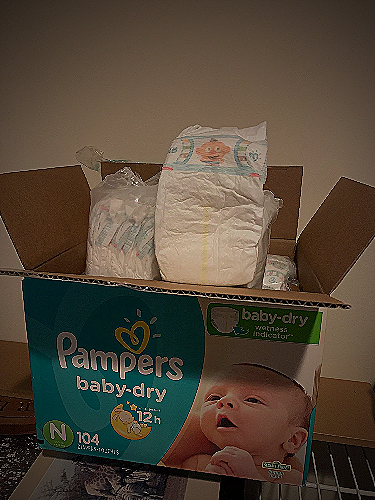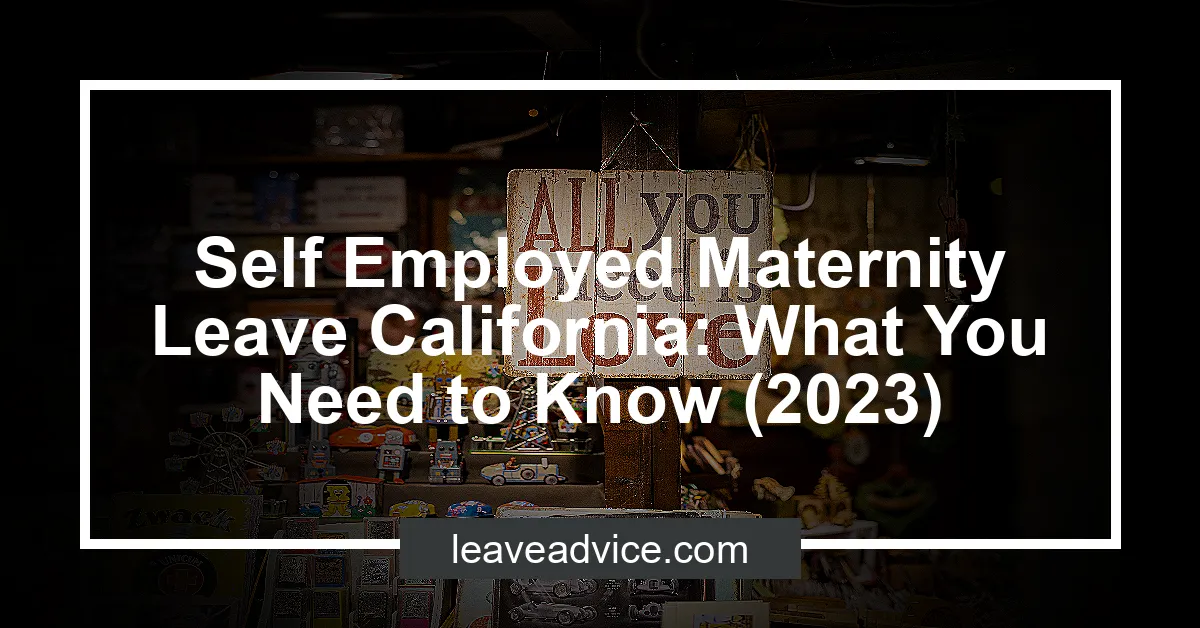Self Employed Maternity Leave California: What You Need to Know (2023)
Expecting a child can be a joyous time, but it can also be stressful for self-employed workers in California. Unlike traditional employees, self-employed workers and independent contractors are not eligible for paid family leave.
However, there are still options available for those in need of maternity leave.
Check out this Youtube video: “Saving for Maternity Leave in California (And I’m Self …),” if you want to learn about how to save money for your upcoming maternity leave in California as a self-employed person. Get amazing financial advice in this video!
Eligibility for Self-Employed Maternity Leave California
If you are a self-employed worker or an independent contractor in California, you are not eligible for paid family leave benefits from the state. However, you may still be eligible for up to 12 weeks of unpaid job-protected leave under the California Family Rights Act (CFRA) if you meet the following minimum requirements:
- You have worked for the same employer for at least 12 months
- You have worked at least 1,250 hours during the previous 12-month period
- Your employer has at least 50 employees within a 75-mile radius of your worksite
Additionally, if you have purchased disability insurance through the state or a private insurer, you may be able to receive disability benefits for up to 6 weeks during your maternity leave. This benefit provides partial wage replacement at a rate of 60% to 70% of your weekly earnings, up to a maximum weekly benefit amount.
The amount you receive is based on your income and other factors, and is subject to a minimum and maximum weekly benefit amount.
It is important to note that eligibility requirements and benefit amounts may vary depending on your specific situation, so it is always a good idea to consult with a qualified attorney or financial advisor to ensure that you understand your rights and options.
California’s State-Supported Paid Leave
Self-employed workers in California are not eligible for the state’s Paid Family Leave (PFL) program, which provides disability insurance benefits to eligible workers to care for a seriously ill family member or to bond with a new child.
However, self-employed individuals in California can purchase a separate voluntary PFL insurance policy, which is offered by some private insurance carriers, to provide similar benefits.
If eligible, self-employed individuals can receive up to $1,300 per week for up to eight weeks to care for a seriously ill family member or to bond with a new child. The amount of benefits received is based on the individual’s earnings in the previous 5 to 18 months before taking leave.
In order to qualify for the voluntary PFL insurance policy, self-employed individuals must have a minimum of $2,500 in net business income for the most recent taxable year and contribute to the state’s Disability Insurance (DI) program.
Financial Planning for Self-Employed Maternity Leave California
If you are a self-employed worker in California, it is important to plan and prepare for maternity leave if you are expecting a child. Since self-employed workers and independent contractors are not eligible for paid family leave, it is important to create a financial plan to cover your expenses during this time.
- Creating a budget is one way to estimate how much money is needed during maternity leave. Determine how much money is needed to maintain your current lifestyle and cover any medical expenses. It is important to consider fluctuating income during this time, and try to save as much as possible before taking leave.
- Alternative sources of income can also be useful during maternity leave. Consider freelance work or short-term projects that can be done from home. You can also consider monetizing online skills such as web design or writing to generate income.
To have a clear understanding of how much to save, it is suggested to calculate the expected revenue in the first month of maternity leave, then subtract your business expenses, including taxes and your salary. The resulting figure will be an estimation of how much is needed to cover maternity leave expenses.

Crafting a Transition Strategy
Preparing for a temporary departure from self-employment requires a well-crafted transition strategy. Since self-employed workers and independent contractors are not eligible to receive paid family leave, it’s important to have a plan in place to ensure a smooth transition.
Here are some tips:
- Delegate Work Tasks: Delegate your work tasks to someone you can trust. You can train them before your leave starts, so they know how to do the job properly while you are away. You can also provide instructions, guides and videos to help them continue your work without interruptions.
- Build a Support Network: Have a support network to rely on during your time away. You can seek out family, friends, or colleagues who can help you with errands, houseworks, or even co-working spaces. There are also many online communities created specifically to support freelancers and self-employed workers, so you can join those and get help and support whenever you need it.
By delegating work tasks and building a support network, you can ensure that your work continues while you enjoy your maternity leave. These steps can help you avoid losing clients or business during your temporary departure.

Conclusion
Self-employed workers and independent contractors are not eligible for paid family leave in California. However, they may be eligible for up to eight weeks of Disability Insurance (DI) benefits through the state’s Employment Development Department (EDD).
The amount of benefits received is based on the individual’s income and ranges from $50 to $1,300 per week. Self-employed individuals should plan ahead and budget for their maternity leave by calculating their expected revenue and subtracting business expenses to estimate the amount of funding needed each month.

